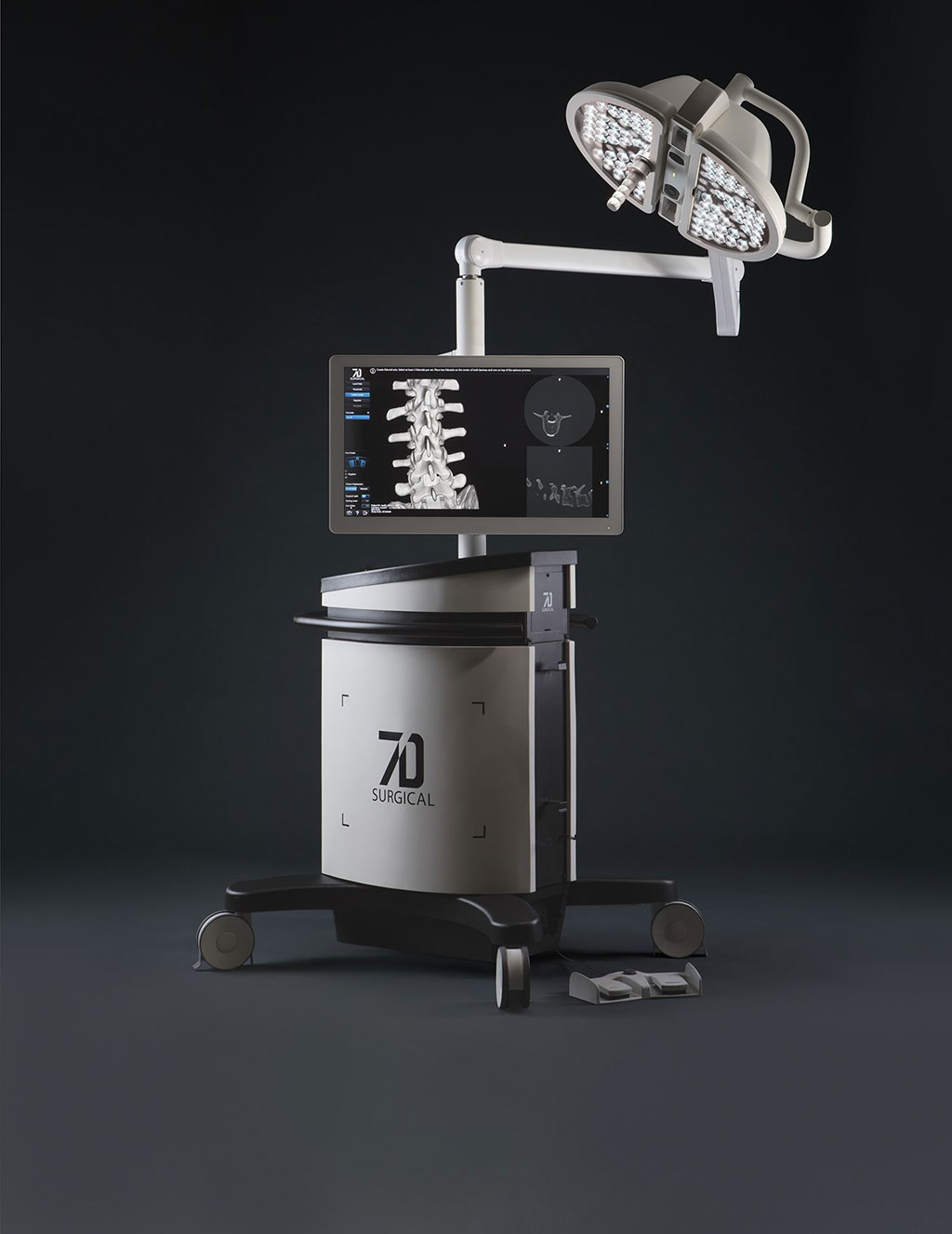Optical Guidance System Reduces Spinal Surgery Times
By MedImaging International staff writers
Posted on 03 Dec 2019
A new Machine-Vision Image Guided Surgery (MvIGS) navigation platform creates a near-instantaneous visual representation of the patient's anatomy, reducing operative times.Posted on 03 Dec 2019
The 7D Surgical (Toronto, Canada) surgical system is based on an invisible spatial pattern projected from an overhead surgical light onto exposed patient anatomy. While the pattern is itself is not discernable to the operating surgeon, it is detectable by the system; using three dimensional (3D) optical technologies and machine vision algorithms, a near-instantaneous rendering of the patient's anatomy is created, eliminating a long-standing barrier of widespread adoption of surgical navigational platforms.

Image: 7D Surgical System (Photo courtesy of 7D Surgical)
Unlike conventional image guided surgery systems that depend on intraoperative radiation, the MvIGS platform can achieve incredibly fast (less than 20 seconds de novo spinal registration) acquisition and rendering of a highly accurate and detailed 3D surface. Once the surgeon defines the level of surgical interest, registration points are co-localized to the pre-operative CT. The MIGS navigation technology is embedded in an onboard overhead surgical light, which eliminates line of sight frustrations in the operating room, and is controlled by the surgeon using only a foot pedal.
“We have created an advanced imaging system using machine vision cameras. This in combination with our object registration algorithms allows our technology to automatically identify tissues or anatomical structures of interest very quickly and very accurately,” said Beau Standish, CEO of 7D Surgical. “For example, the surgeon can visualize where the pedicle canals are below the top level of bone or through tissue. The surgeon then uses our optically tracked surgical tools, which are virtually overlaid on the patient’s pre-operative data (CT, MRI) via a high definition monitor in the operating theatre.”
“7D Surgical's new MIGS system appears to provide a faster, radiation-free alternative to existing options; it could be an important new tool in expanding the use of IGS in spine procedures,” said Frank Cammisa, MD, chief emeritus of the spine service at the Hospital for Special Surgery (HSS, New York, NY, USA). “Image guided surgery technology has finally caught up to the needs of a practicing spine surgeon. The 7D Surgical System reduces the overall cost and footprint required to navigate the spine. It's a win-win for the surgeon and the hospital.”
Related Links:
7D Surgical
Hospital for Special Surgery













